Webinars for lead generation have become an extremely popular tool, because they allow for increased client interaction, whilst also demonstrating your expertise. Additionally, they can help you to build authority and position yourself as a thought leader.
In this guide, we will discuss how best to utilise webinars for lead generation.
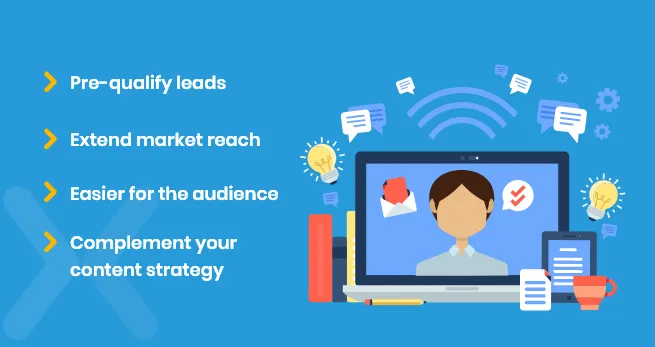
The leads generated by using webinars are, by their nature, high-quality. They have already shown interest in your industry and your company by signing up for the webinar. That alone makes them better than randomly generated leads.
Basically, the goal with running webinars is to build an authoritative voice, and position yourself as a thought leader, while capturing client information. In this way, you create the beginning of a working relationship.
There are certain factors which make webinars good for lead generation.
The ability to pre-qualify leads: You can ask your customers questions at various stages over the webinar experience. This helps you to gauge whether they would be a good potential client.
Extended market reach: Anyone from anywhere can attend a webinar. The seats available at a webinar are not restricted by physical space - you can have as many attendees as you want. Additionally, they are a valuable tool when you want to generate international leads.
Easier for the audience: Even if you are trying to engage local clients, virtual events are much more convenient. This may help you to bring in more leads than a physical symposium. Typically, webinars are about an hour long, depending on their format. It is much easier for attendees to fit an hour-long webinar into their schedules as opposed to a full-length symposium.
Complement your content strategy: Webinars can be integrated into your current digital marketing strategy and can be repurposed into multiple forms of content. This allows you to cast as wide a net as possible for generating new leads.
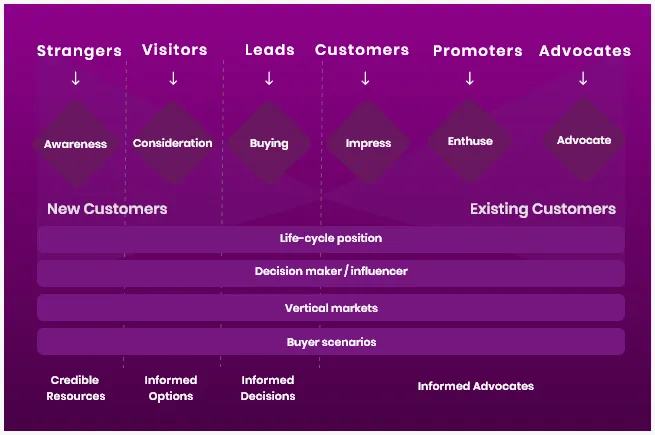
There are a few simple ways to optimise your webinars for lead generation. Consider the following to help you along the way:
There are two main types of webinars: educational and product webinars. Generally, educational webinars perform better than those that focus on hard selling. They often leave a much better impression than pushing a corporate agenda on your audience. Educational webinars should focus on teaching your customers useful skills that are applicable to real life. Pick a topic relevant to your industry that will be of value to your customers. Topics that are creating a buzz or going viral are good choices, but be sure to add a unique perspective to set you apart. If done well, an educational webinar can include a soft sales pitch at the end. This should be done very subtly and the product should be a solution to the problems you have mentioned. To boost this soft sales pitch, you can add a free gift such as a discount code, training material, or even one-on-one demo calls.
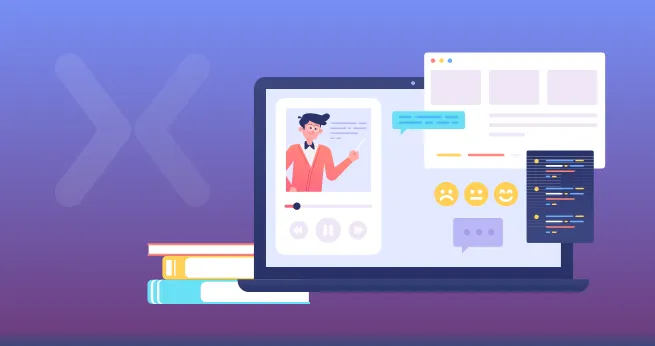
When you team up with other companies to produce a webinar, it allows you to extend your audience. You can leverage their subscriber base, thus increasing the overall potential for lead generation. Bringing on a partner increases the resources available including connections with experts, access to better tech or even just more hands-on deck. Partner with a company that has a broad network and who is rich in areas that you need help with.
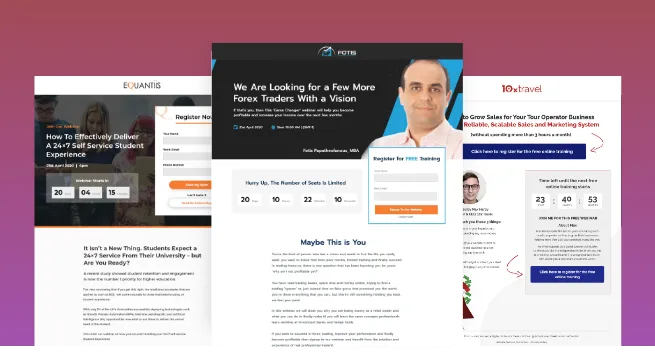
A landing page is a standalone web page that exists separately from your main website. Customers are redirected here after clicking on an ad or other link. These are campaign-specific pages that aim to convert customers by asking them to perform an action. This call to action (CTA) is generally filling in information or asking customers to subscribe.
In terms of webinars, you use landing pages to get prospective clients to sign up and book a seat for the webinar. This may involve purchasing a ticket. If your focus is lead generation, it is not recommended to charge clients for attending. The paywall may turn a lot of customers away. A successful webinar landing page should do the following:
Include a short teaser video highlighting the main topics to be covered, as well as the ‘drawcards’. Videos help share the main aspects of your webinar more creatively and clearly. Drawcards are the aspects of your event that make it unique, such as well-known guest speakers.
Include pictures of your speakers accompanied by short biographies.
Build the excitement by including a countdown timer, limiting the number of seats available or gifting early-bird subscribers with prizes such as free e-books, free trial, or a free personalised needs surveys.
Every webinar should aim to address a particular problem for your audience. The information included in your webinar should be indispensable to their solving the problem. You also need a unique twist. Showcase selling points that make your webinar unique and prominently display them on your landing page.
All landing pages need a call to action. But, it is time to move away from the traditional ‘register now’ button and try phrases such as ‘book your seat’ or ‘get your free pass’.
Related: Webinar Landing Page CTA Text Ideas
In order to use webinars for lead generation, the webinar registration form should be user-friendly and quick to fill in. A form that appears to have too many questions can appear overwhelming and decrease conversion rates. Rather, use a multi-step landing page form with small amounts of questions at each stage. This allows customers to make ‘micro-commitments’ without feeling like they are expending too much effort. The customer should never be confused as what to fill in or do. Instructions should be simple and easy to follow.
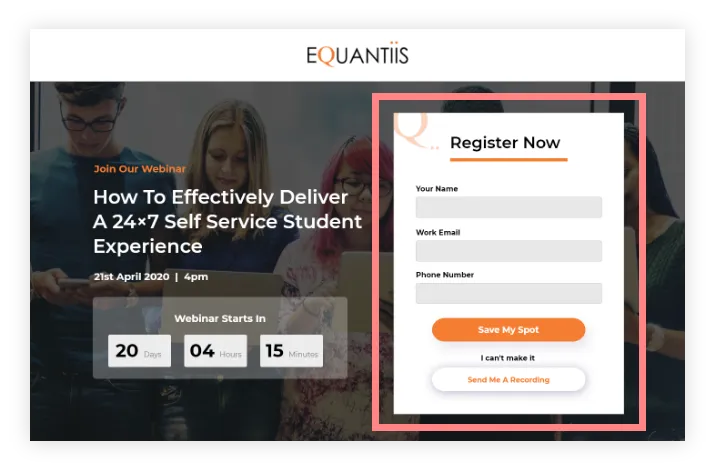
Due to the nature of the internet, users are always on the lookout for scams. This is where social proof comes into play. Social proof is a term which refers to specific trust factors which can put viewers at ease.
Social Media Counters. These counters inspire trust - they show how many social media followers you have across different platforms.
Testimonials. These could be from customers that have used your services or watched previous webinars.
If you have produced previous webinars, mention them on this page. This allows users to gauge their expectations. Do not link to other webinar script recordings. It is imperative to avoid external or internal links on a landing page. These distract the user from their goal and will decrease conversion rates.
Once the user has subscribed, redirect them to a ‘thank you’ page. This is an excellent way to prolong your interaction with these newly generated leads. A thank-you page is a perfect place to incorporate links to your main website, social media platforms and webinar library.
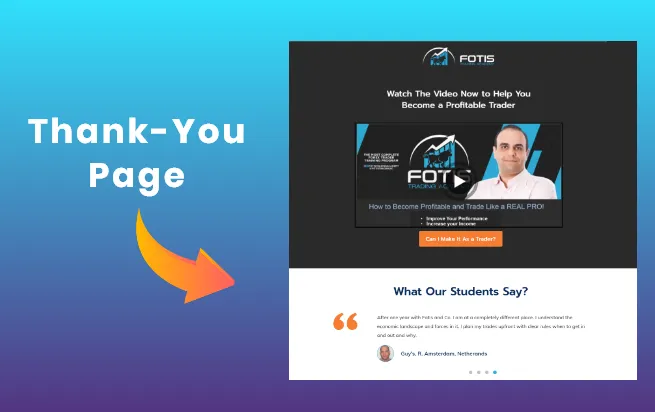
These simple tricks will help your landing pages overall performance and conversion:
Don’t include external or internal links. Links can distract the customer from the CTA and decrease conversion rates.
Don’t include too much information or writing. You want to entice the audience not overwhelm them.
Don’t give too much away - you want them to watch the webinar. If you give the whole thing away, there is no point for customers to watch.
Hosting a webinar for lead generation is all about creating a good first impression of your brand. Ideally, your leads should view your company as a thought-leader in your field. It is vital that things run well - any ‘hiccups’ may make you look unprofessional. This can destroy the authority you are attempting to build. Having a rehearsal with your guests is a good idea. Ensuring that everyone is familiar with the tech platforms is also essential.
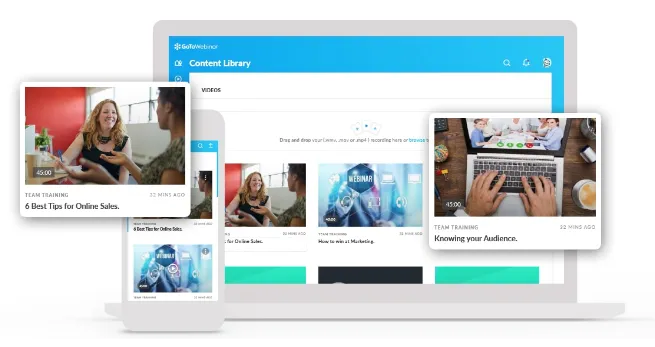
You need to follow through on your new leads - if you leave your leads too long they will grow cold. Nurturing your leads is the final step to making webinars for lead generation success. Don’t let the hard work of creating your webinar go to waste. The key is to maintain contact with your new leads.
Build a webinar library on your website. In this way, customers can continue to engage long after the virtual event is over. This allows attendees to revisit the webinar and explore previous webinars. Additionally, it allows users who didn’t manage to attend a chance to watch. In this way, new leads can continue to generate leads.
Firstly, send follow-up emails to those who registered to keep the conversation going. It is a good idea to segment your mailing list to those who watched the webinar and those who didn’t, even though they subscribed. Thank those who did attend in an email - perhaps with a quick survey and a link to your webinar library. While you can send those who didn’t attend an email with a link to the recorded session. The first email should be sent within 24-hours of your webinar. Social media should not be ignored. Post about both upcoming and past webinars. This helps to generate interest and keep the conversation going - generating leads while keeping contact with older leads.
Identify hot leads - these are customers who are further along in their buyer’s journey and ready to make a purchase. You can identify these leads through a post-webinar survey. In-session polls are more successful as only a third of attendees fill in the post-webinar survey. If you do use an in-session try to make the question feel natural and not forced. You can also identify hot leads by using webinar data such as engagement levels, time spent in the webinar, and previous webinar attendance. After you have identified your ‘hot leads’ you need to nurture the rest of your leads. The first stage in this process is developing high-value content. These articles and posts should focus on being informative and educational. Thereafter you can add product-specific content. The length of time spent on this nurturing-campaign depends on your company. It is largely dependent on your sales cycle. The average length is about six weeks.
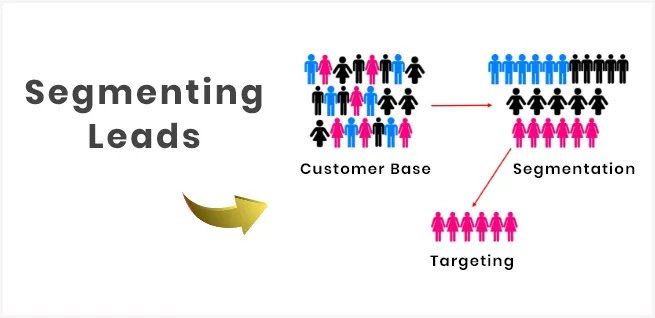
Webinars for lead generation have become a popular tool. They are ideal because they allow you to pre-qualify leads, overcome logistical barriers and are convenient for customers.
You need to optimise your webinars for lead generation. It is not enough to simply upload a webinar. To develop better leads several factors must be considered. These factors include webinar content, guest speakers, and partners.
Brand awareness webinars should focus on sharing high-quality information that enriches the customer’s life. This is far more memorable than pushing for sales.
Webinar landing pages are essential in the lead generation process. To truly utilise your webinars for lead generation, you need to capture as much information about your attendees as possible. The landing page should be informative, but drive conversion.
Partnering with other businesses can greatly improve your webinars for lead generation. There are two chief benefits to co-producing webinars: increased audience and resources.
Remember to nurture the leads you have generated -without attention they will grow cold. Making a webinar library - and sharing links via email blasts and social media posts - allows you to keep contact with your leads and help generate new leads.
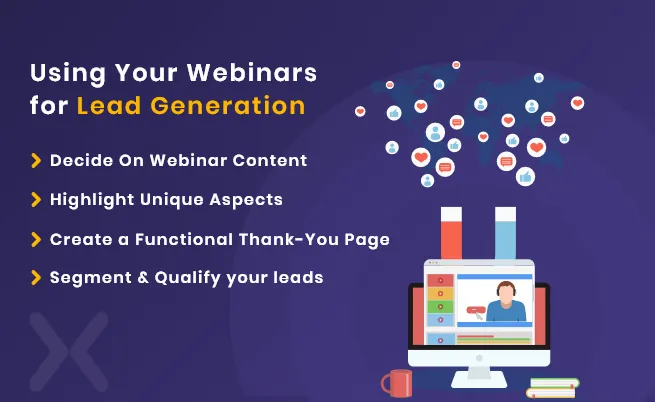
Drive More Sales or Leads With Conversion Focused Websites and Landing Pages
Get Started.webp)
In today’s fast-paced digital world, having a responsive website is no longer just a nice-to-have, it’s essential. Whether...
As artificial intelligence continues to evolve, businesses are finding innovative ways to enhance their marketing efforts. One of...
Get quality posts covering insights into Conversion Rate Optimisation, Landing Pages and great design